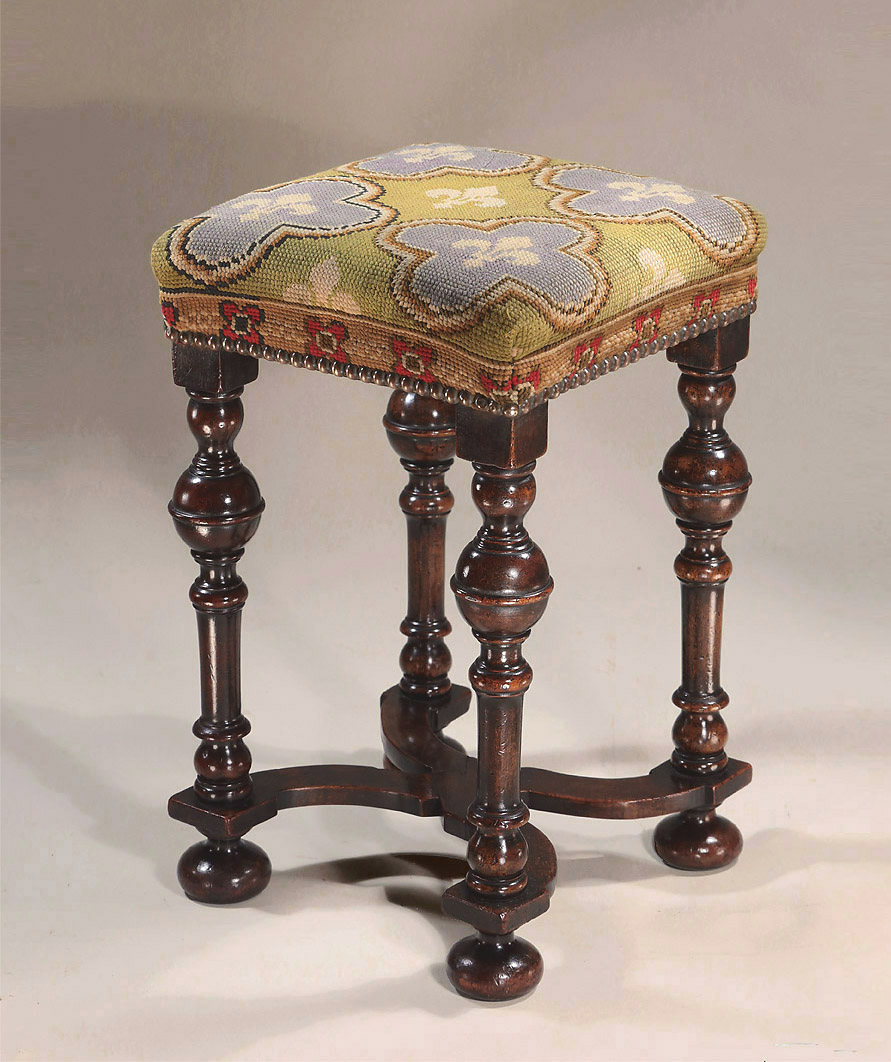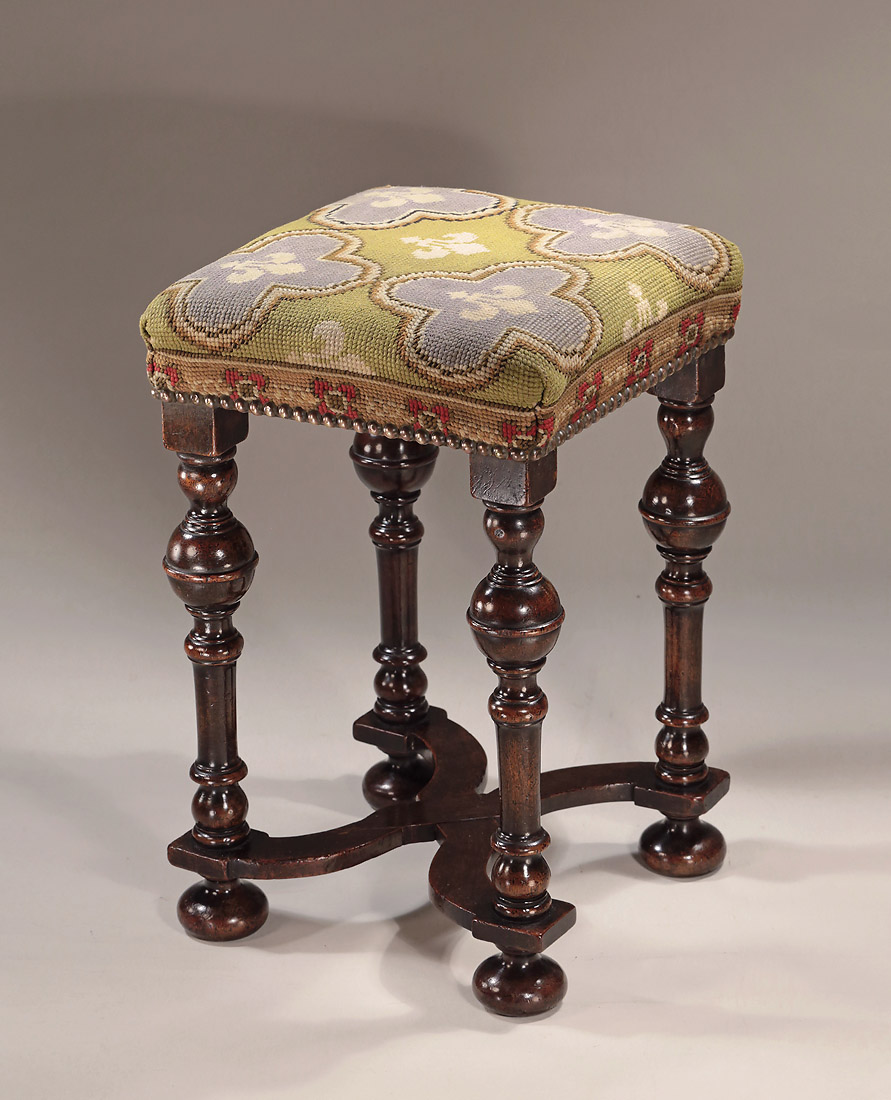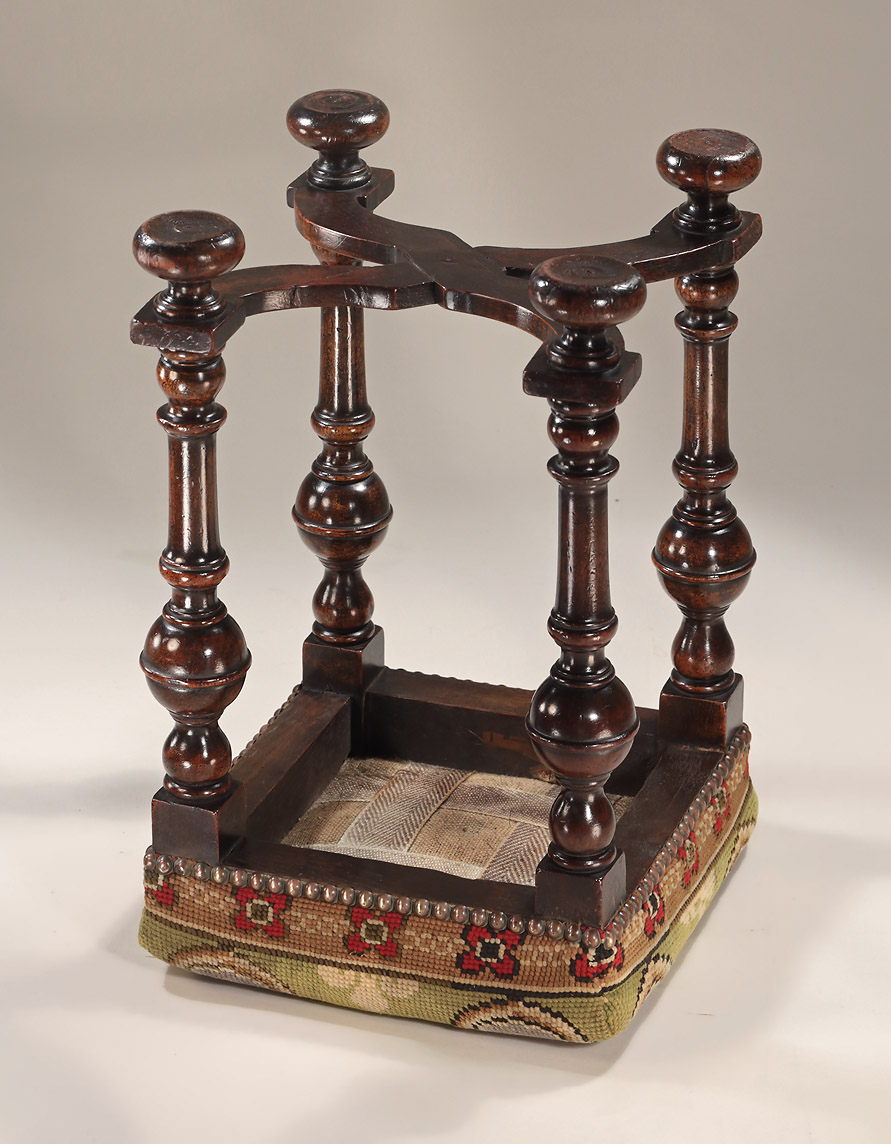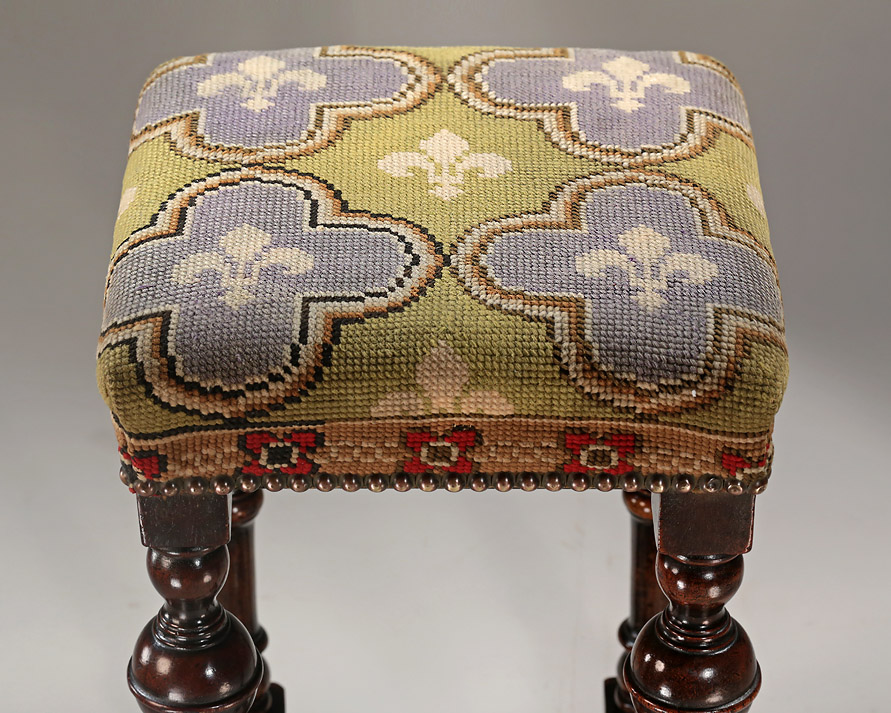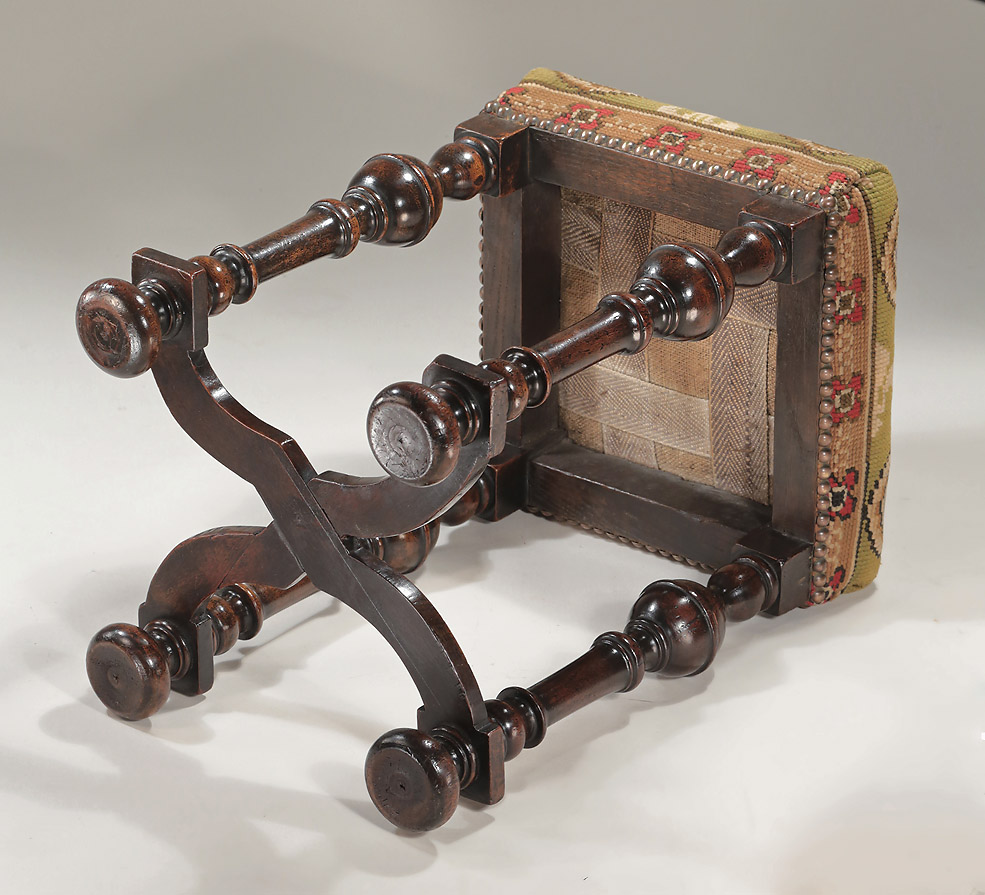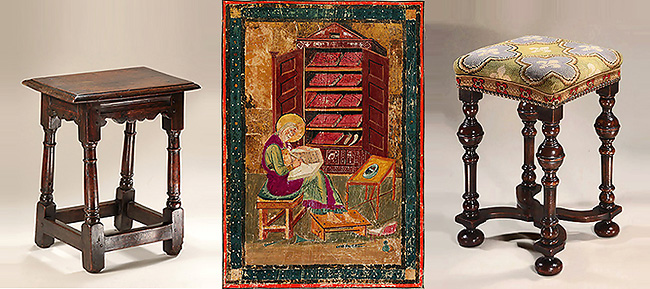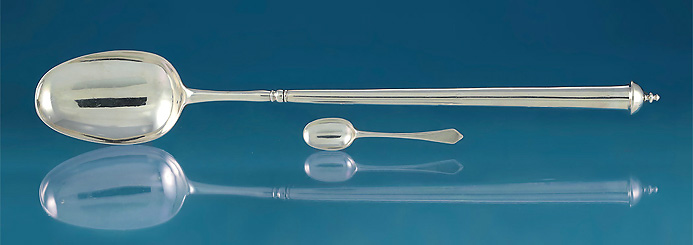|
M. FORD CREECH ANTIQUES & FINE ARTS
WILLIAM III / QUEEN ANNE WALNUT TURNED UPHOLSTERED STOOL England, c1695 - 1710
Also See :
The English (and European) tradition of the stool is a long one – from peasant to nobility. Chairs, even until the very late 17th century, were reserved for the head of household – or for Royalty. There were strict rules in Court regarding seating, even on stools. Click here (or the image below) for a short article on seating, and the lost-and-found evolultion of the stool - the oldest piece of furniture in the world.
We welcome and encourage all inquiries regarding our stock. We will make every attempt to answer any questions you might have.
For information, call (901) 761-1163 or (901) 827-4668, or Email : mfcreech@bellsouth.net or mfordcreech@gmail.com American Express, Mastercard, Visa and Discover accepted
M. Ford Creech Antiques & Fine Arts / 581 South Perkins Road / Memphis, TN 38117 / USA / Gallery Hours : Fri.-Sat. 12-6, or By Appointment
|
